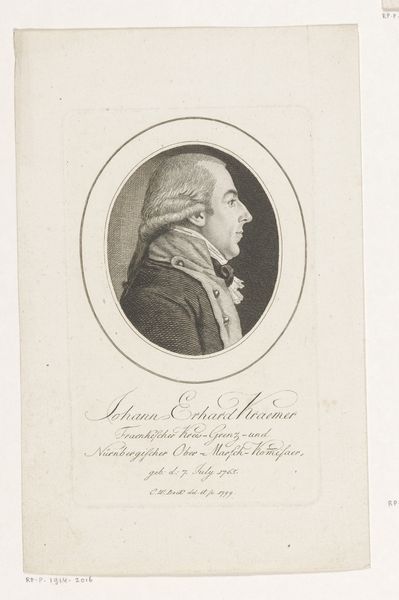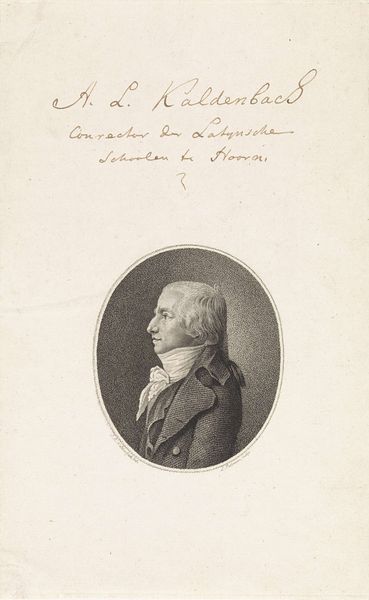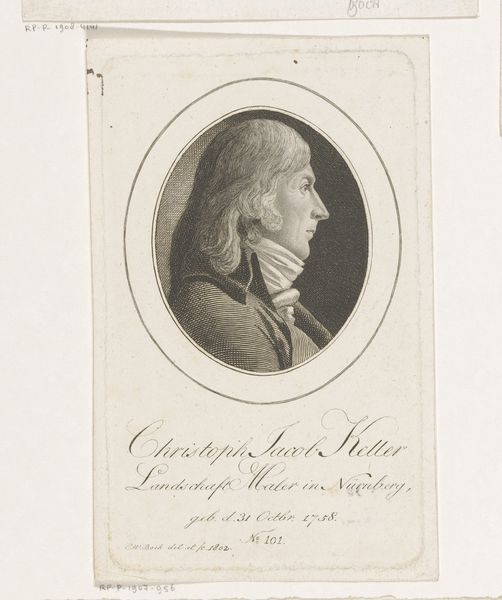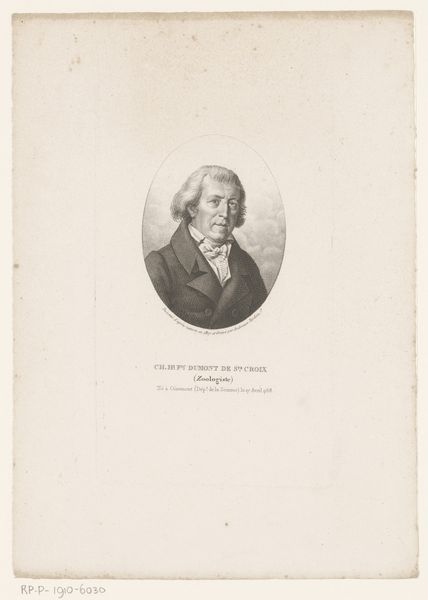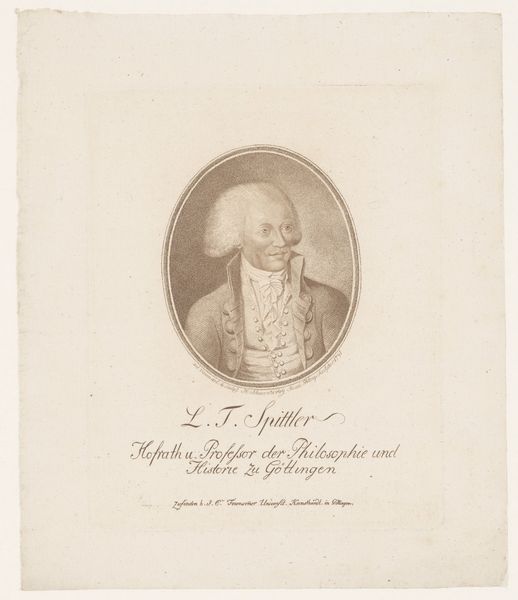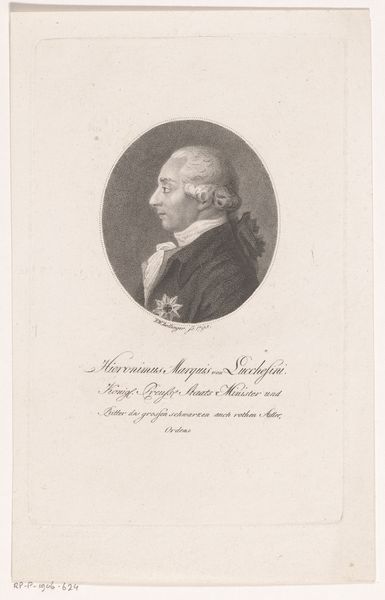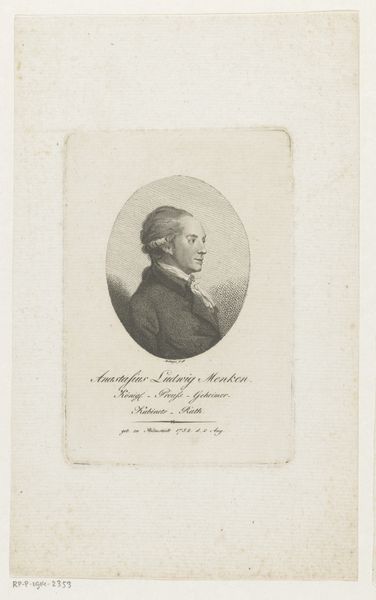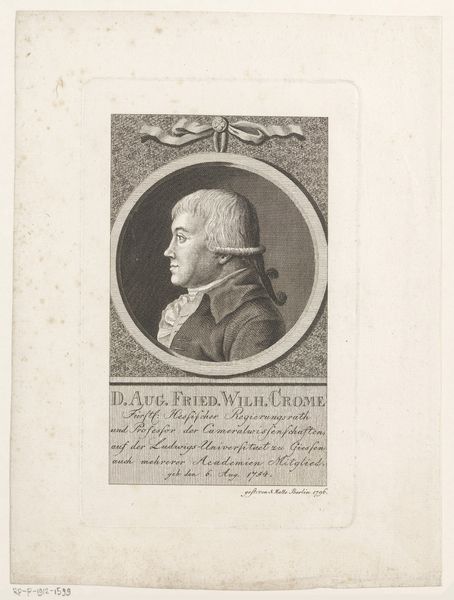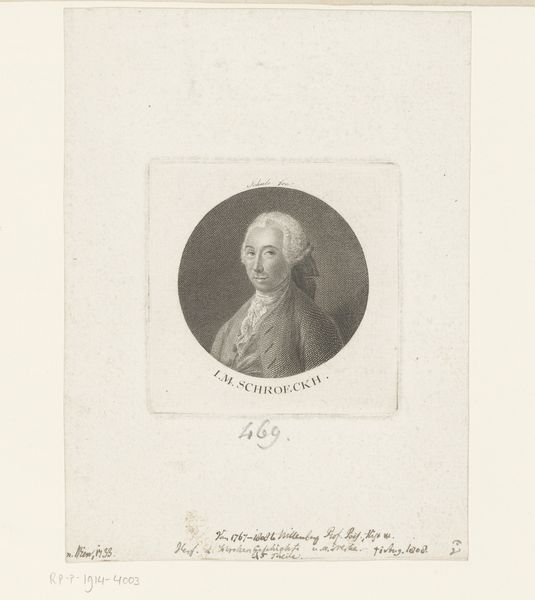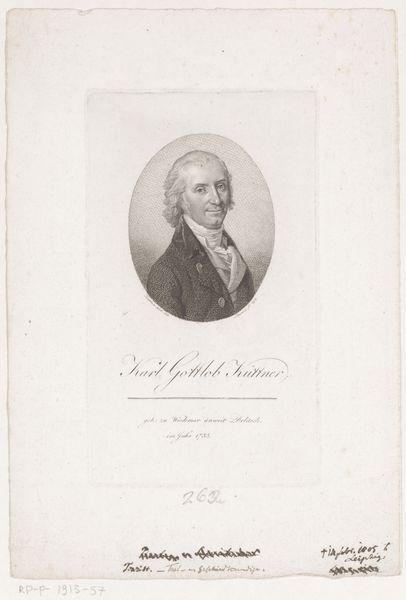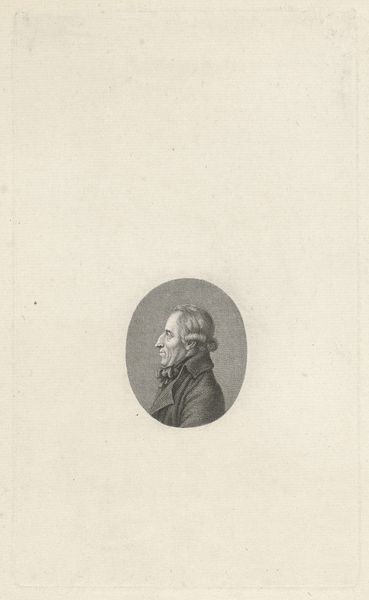
print, engraving
#
portrait
#
neoclacissism
# print
#
engraving
Dimensions: height 158 mm, width 92 mm
Copyright: Rijks Museum: Open Domain
Curator: Today we’re looking at an engraving titled "Portret van Johann Nicolaus Tetens" made sometime between 1780 and 1832, during the Neoclassical movement. It is attributed to Johann Daniel (II) Laurenz. Editor: It’s…stark. Very precise lines, but there’s a somber feel to it. Like a profile on a coin. There’s a formal, almost imposing air that surrounds it despite the monochromatic grayscale. Curator: Absolutely, that severity is part of its aesthetic intention, stemming from its socio-political moment. The rise of Neoclassicism signaled a turn towards "rational" order, drawing on Enlightenment ideals of empirical thinking that affected political power as well as representation. It critiqued what was perceived to be the decadence of the Rococo era. So a print like this reinforces the sitter's role in maintaining systems of power. Editor: And Tetens himself, as identified by the inscription below, reinforces that aura of institutional strength. The title beneath the portrait includes reference to the “Royal Danish Conference” and membership in the “Society of Sciences to Copenhagen”, his affiliations act as symbols for what he embodies. Curator: Precisely. These markers all bolster Tetens' social authority. We see a shift in representation from the intimate court portrait to a public presentation that solidified class. The image promotes the virtues of public service in the enlightenment and promotes this sitter in particular. This use of image can reveal important gendered and racial implications from that period. Editor: How the artist chose to render his face is particularly fascinating—that strong brow line, the precise lines around his mouth…it projects resolve. But I can't help but wonder, too, how that image affected his own sense of identity, almost crafting it in public. The engraving seems almost to make a claim on immortality. Curator: What stands out is the choice to situate him against a neutral background in profile and not frontally as it situates the work, along with the man it depicts in an ongoing conversation about visual tropes and what their cultural effects come to be. Thank you for that astute observation on the image's potential reach. Editor: And thanks to you as well. Thinking about visual authority made tangible in ink gives us a lot to reflect upon when encountering this artwork today.
Comments
No comments
Be the first to comment and join the conversation on the ultimate creative platform.
